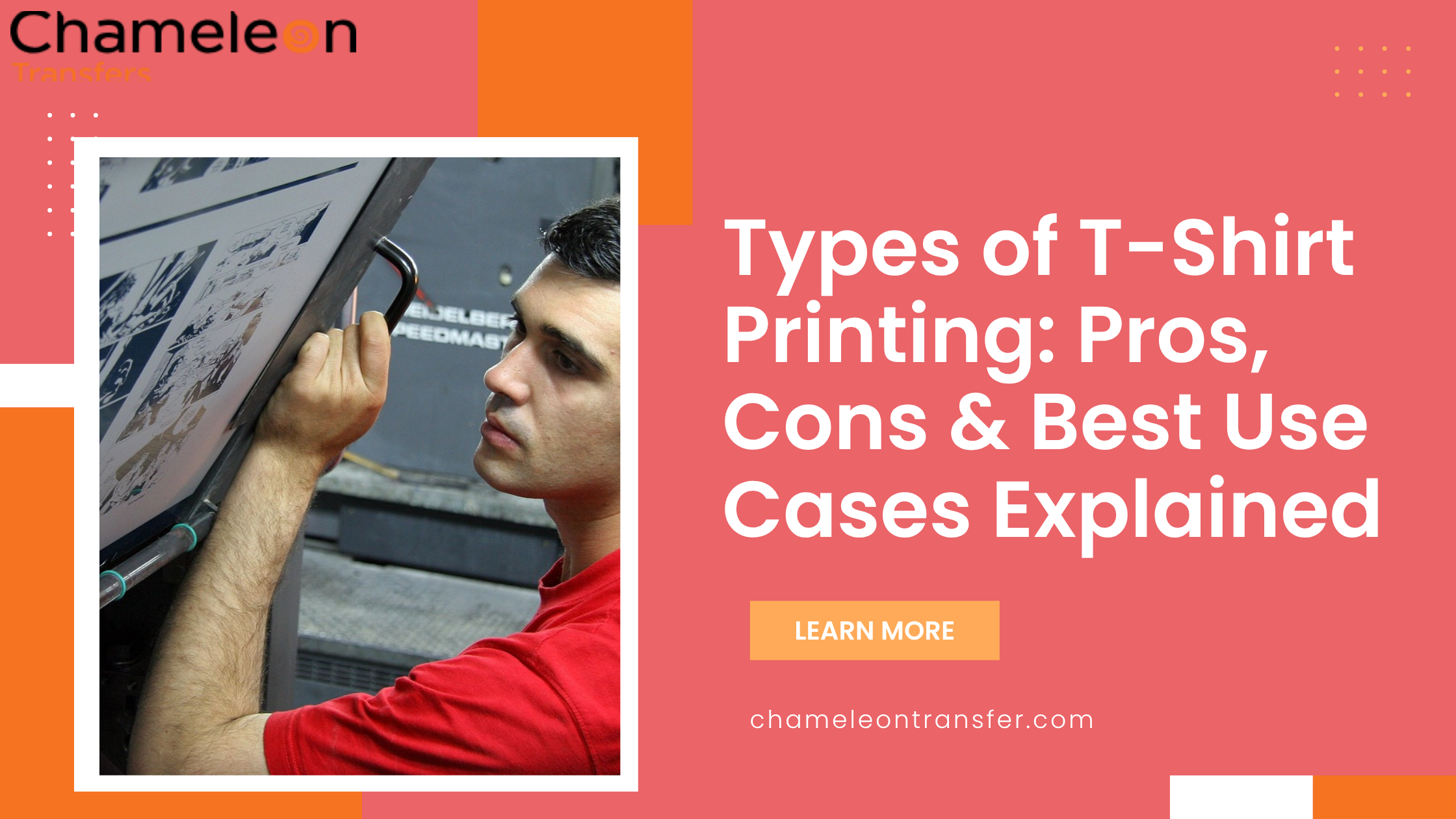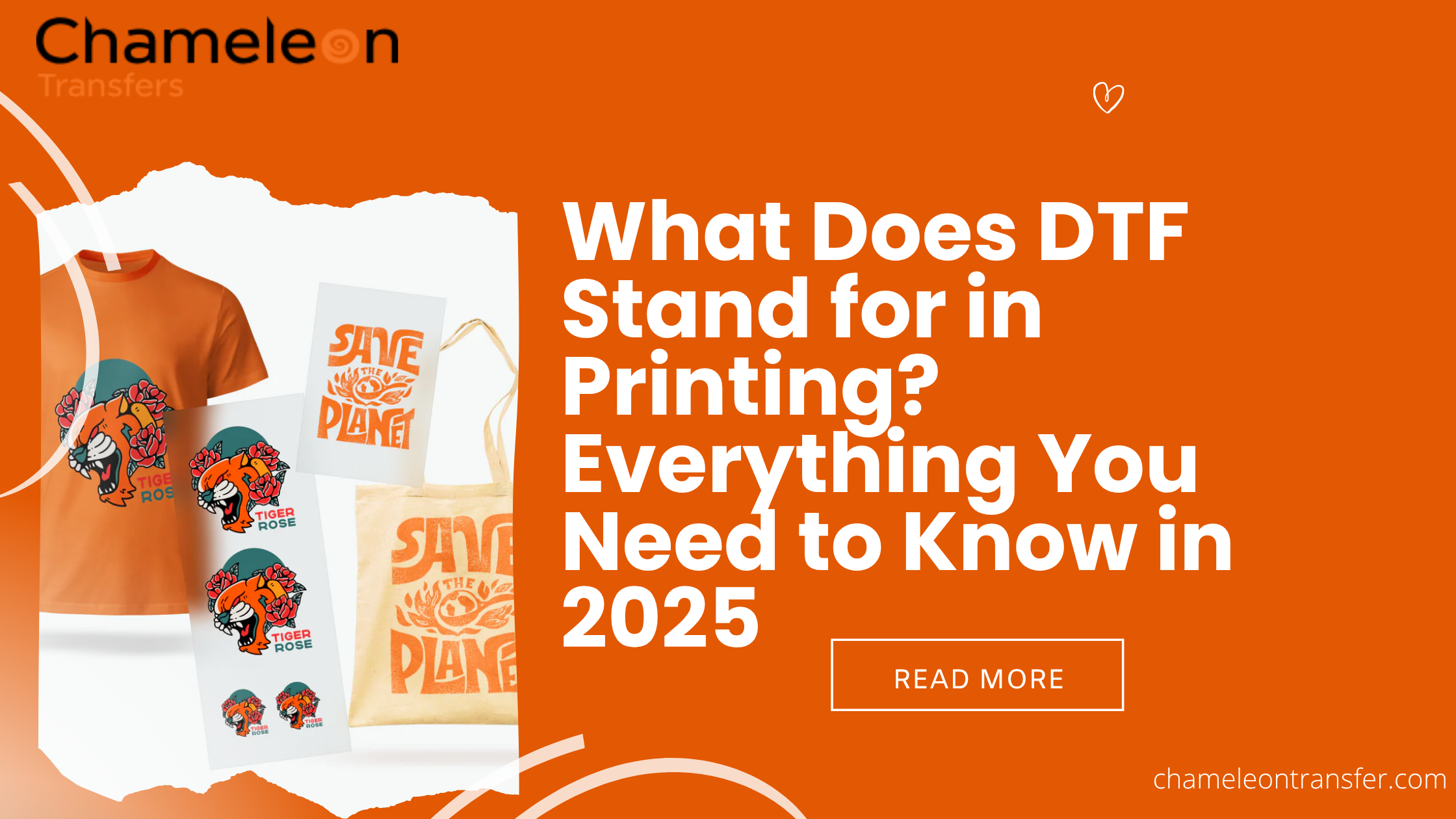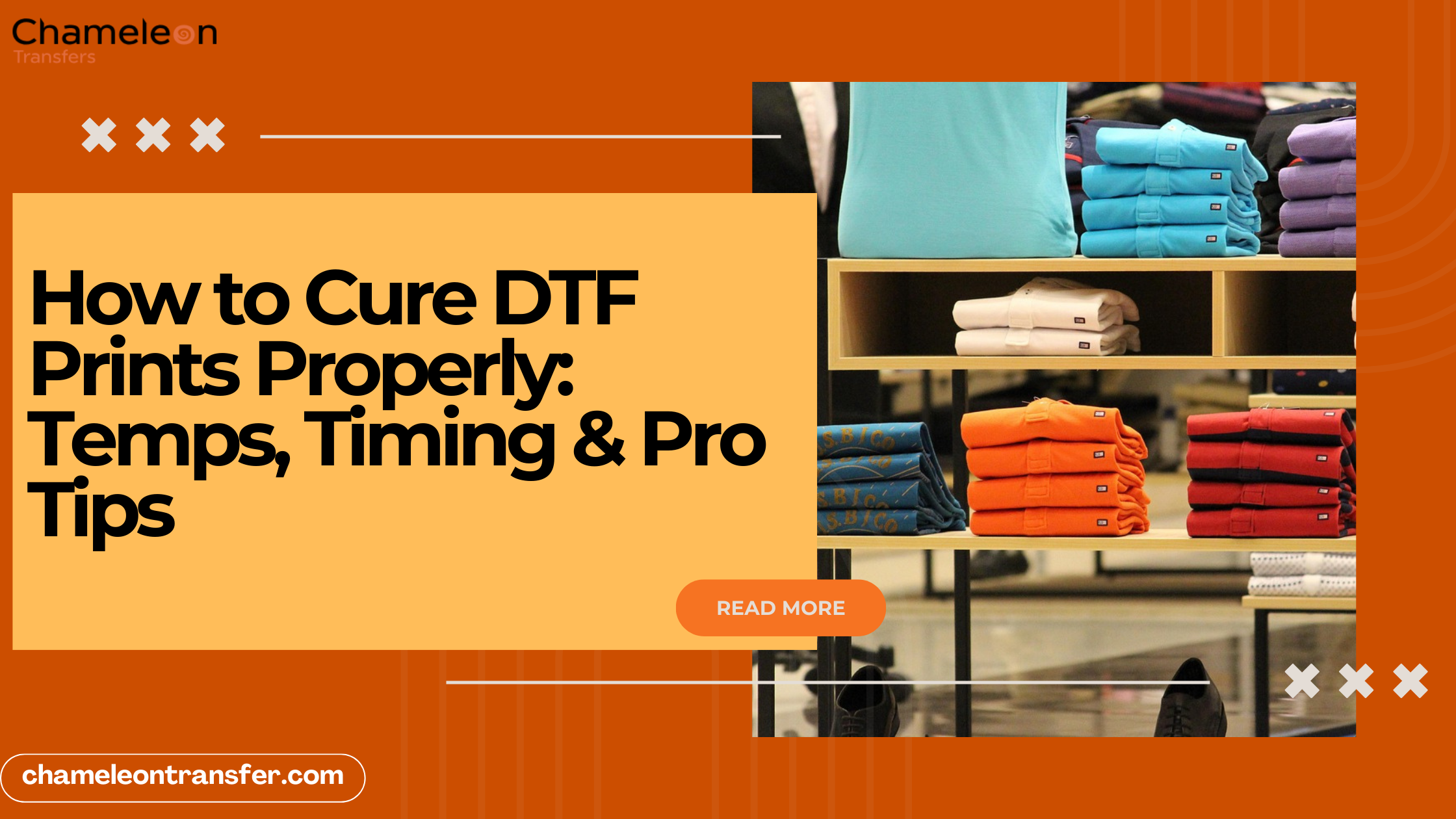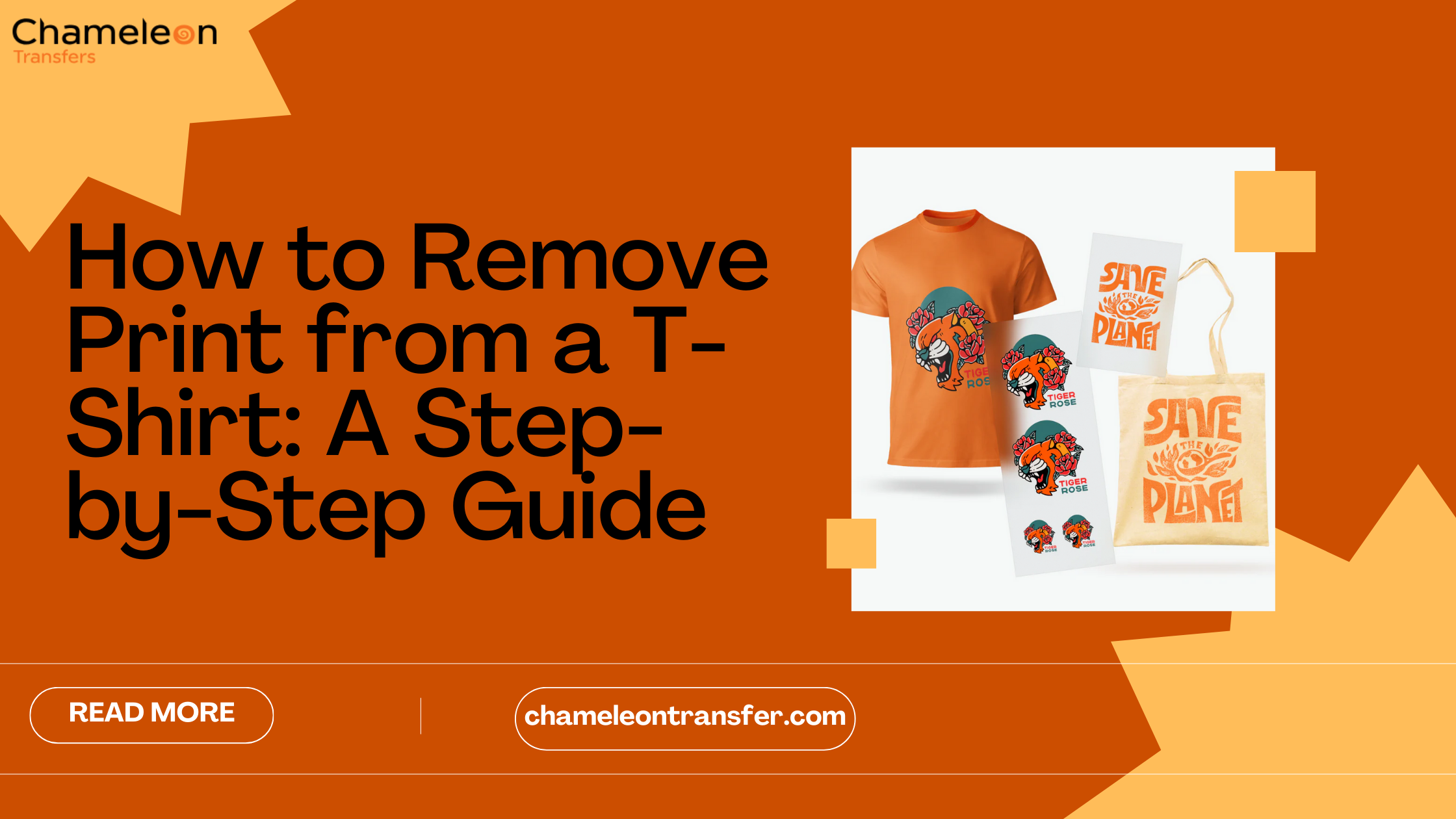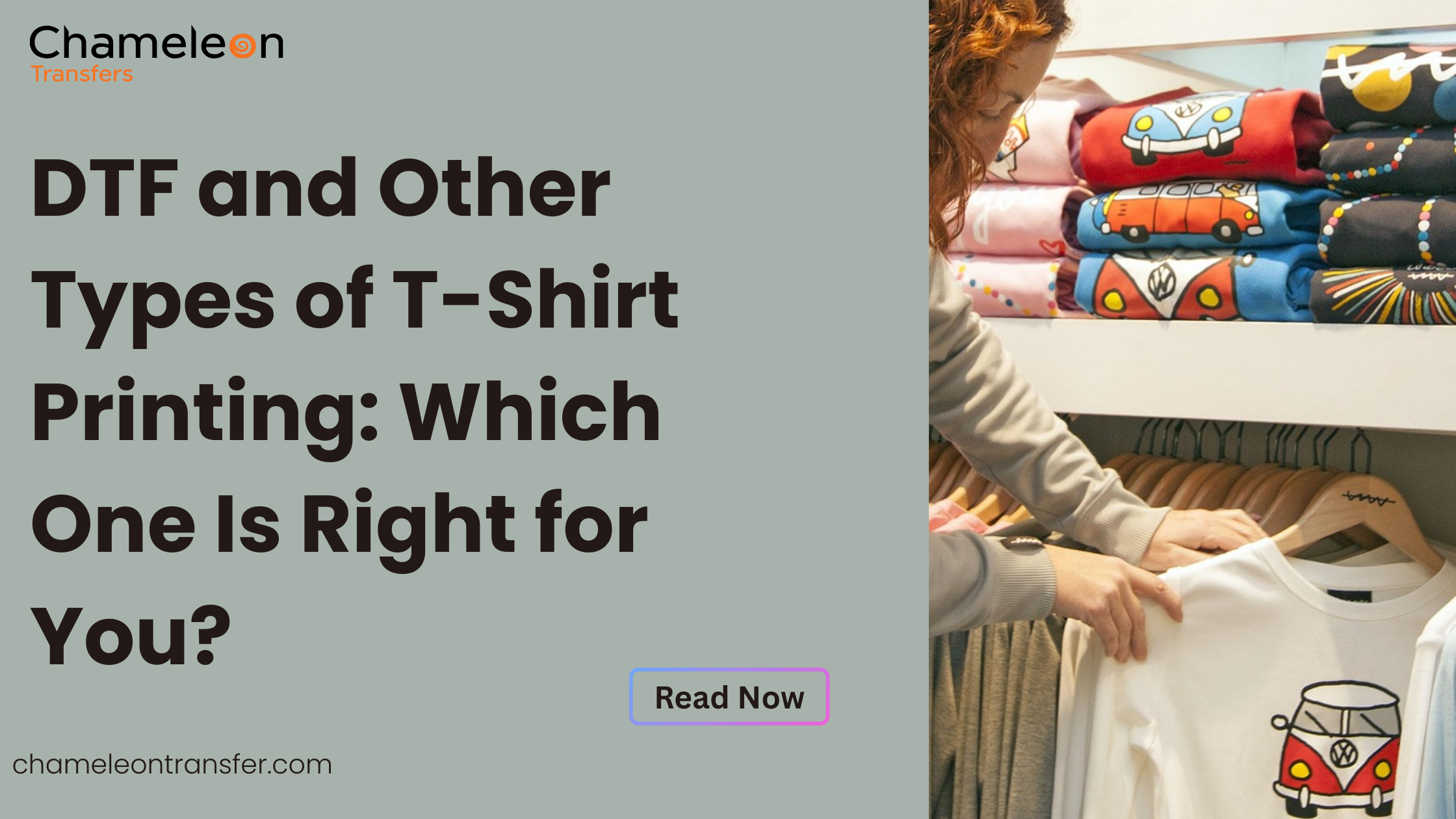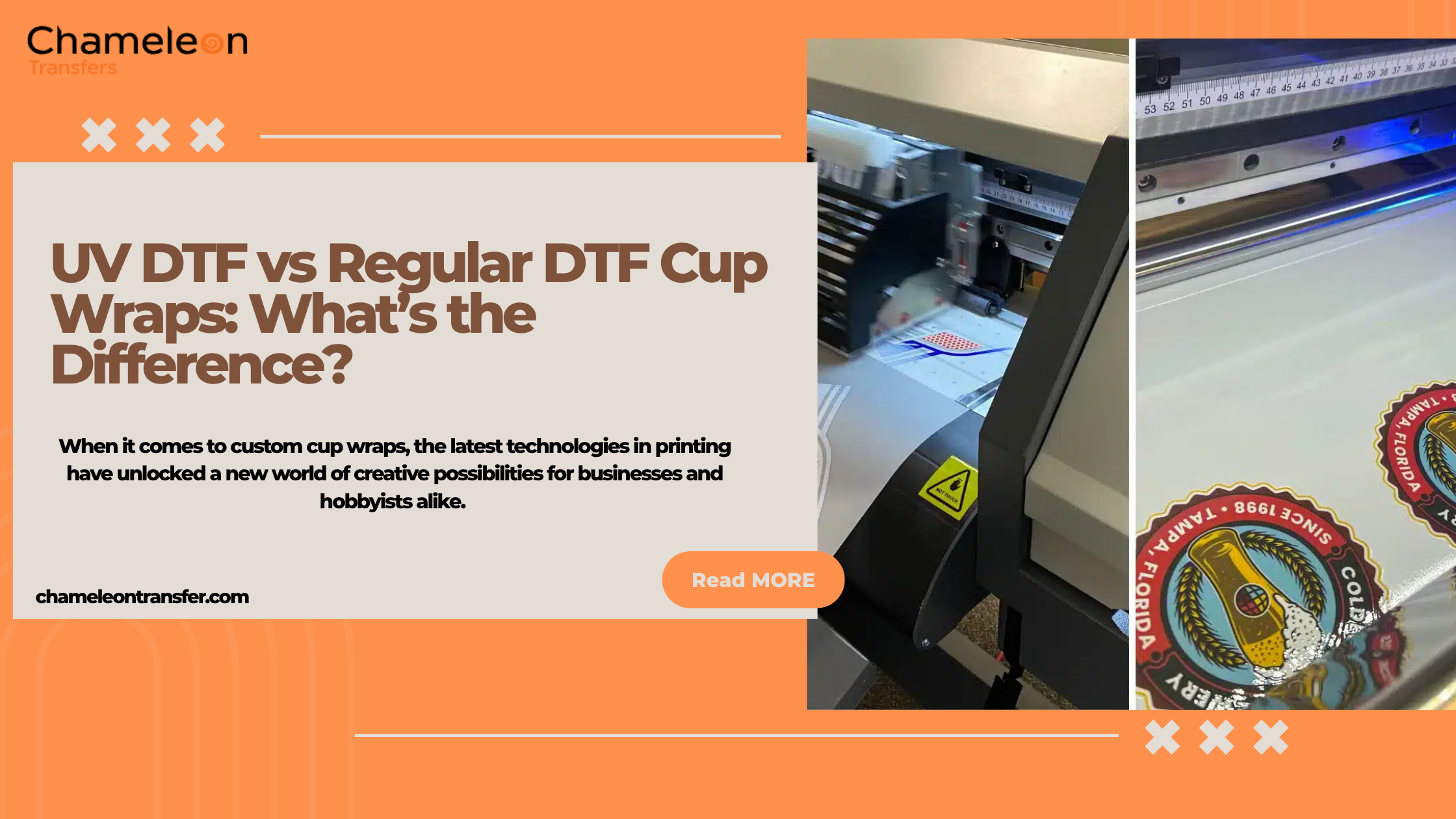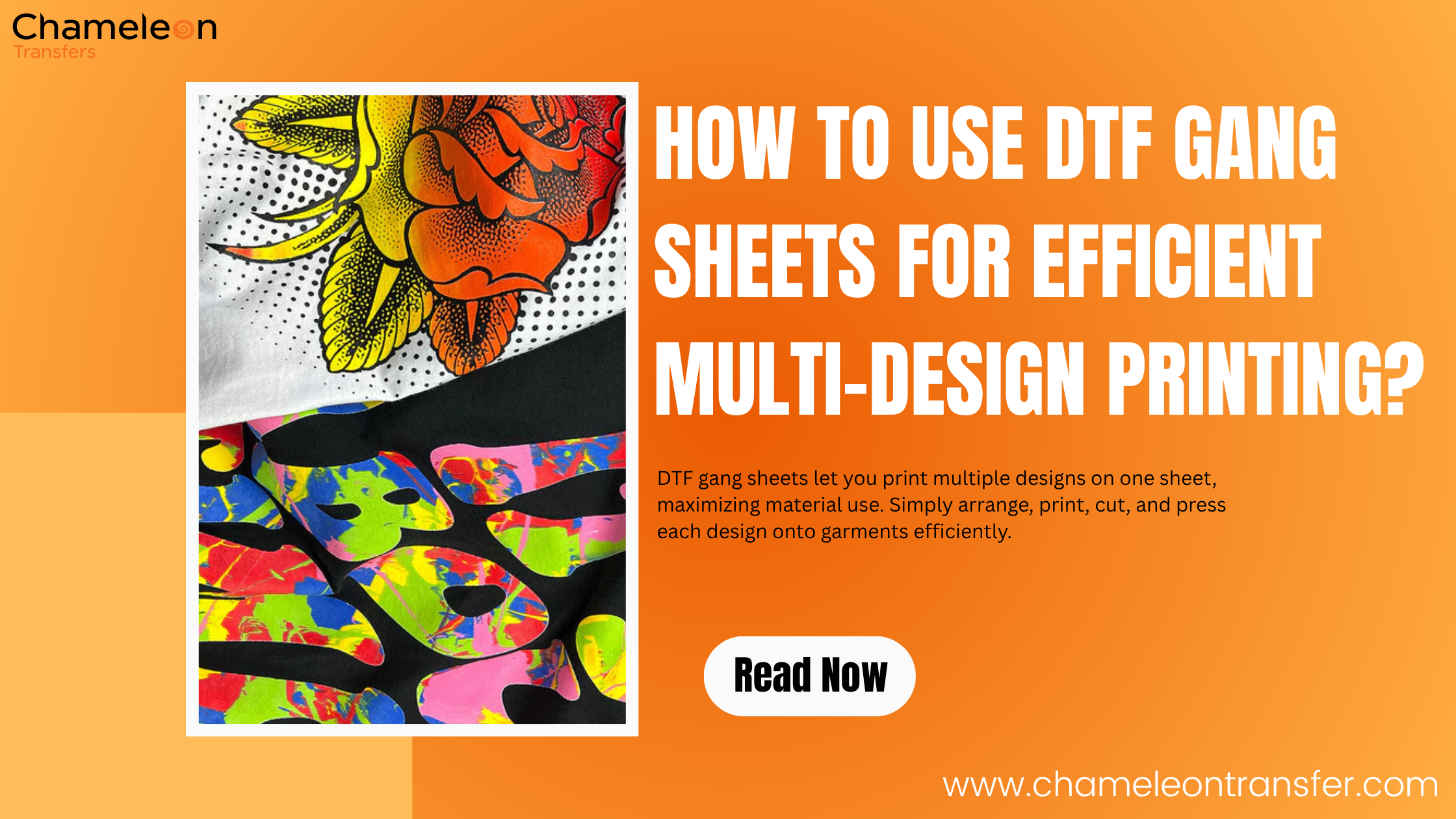Ever thought about how those vibrant, eye-catching designs end up on your favourite t-shirts or custom decor? DTF transfer printing is a revolutionary technique that’s transforming the world of personalised apparel.
If you are excited about what does DTF transfer mean or why it’s gaining so much traction among DIY enthusiasts and businesses alike, you’re in the right place.
Let’s dive into the article and discover the DTF meaning, explore its process, and find out why it’s the go-to choice for creating stunning, durable t-shirt transfers.
What Does DTF Mean?
DTF (Direct-to-Film) is a versatile printing method that helps you to transfer intricate designs onto fabrics like cotton, polyester, and even blends.
DTF transfers don’t require complex setups or expensive equipment, making them accessible for both beginners and experts. The DTF definition is plain: it’s a process where designs are printed onto a special DTF transfer paper or PET film for DTF, coated with a DTF powder adhesive, and then heat-pressed onto your chosen surface.
The design is printed with DTF ink and film basics in mind, creating a vibrant, flexible print that adheres seamlessly to fabrics. This makes DTF transfers perfect for DTF pants, hoodies, or wall art as well.
How Do DTF Transfers Work: The Process Explained

Want to know how to do DTF transfers? The process is simple yet precise, ensuring best-quality results. Below are the step-by-step process:
-
Design Creation: Start with your artwork. If it’s a logo or a colorful illustration, then transfer designs for shirts are digitally prepared.
-
Printing: Using a specialised printer, the design is printed onto DTF transfer paper with DTF ink. This ink is formulated to produce vivid colors and sharp details.
-
Adhesive Application: A DTF powder adhesive is applied to the printed film. This powder sticks to the wet ink, creating a bond that will transfer to the fabric.
-
Curing: The film is heated to melt the adhesive, preparing it for transfer.
-
Heat Pressing: Using a heat press for DTF transfers, the film is pressed onto the fabric at a specific temperature and pressure. DTF transfer application instructions typically recommend 300-315 for 10-13 seconds.
-
Peeling: Once cooled, the PET film for DTF is peeled away, leaving the design embedded in the fabric.
This process makes DTF for cotton and polyester a breeze, and it’s especially effective for printing on dark fabrics with DTF, as the white ink base ensures colors pop.
Why Choose DTF Transfers? Benefits and Versatility

The meaning of DTF lies in its flexibility and quality. Here are some key advantages:
-
Versatility: DTF transfers work on a huge range of materials, from DTF pants to canvas bags, making them ideal for diverse projects.
-
Vibrant Colors: The DTF ink and film basics ensure bold, long-lasting prints, even on dark fabrics.
-
Durability: DTF print durability is impressive with designs that can hold multiple washes without fading or cracking.
-
No Minimum Orders: DTF transfer printing allows for small batches which are perfect for custom orders or one-off designs.
-
Ease of Use: With the right heat press for DTF transfers and DTF transfer paper, anyone can create professional results.
Also Read: What Does DTF Stand For? Understanding DTF Printing & Its Benefits
DTF vs. Other Printing Methods
To fully grasp what does DTF transfer mean, it’s helpful to compare it to other methods like screen printing or vinyl transfers. Screen printing requires multiple screens for each color, which is costly for small runs.
Vinyl transfers, while easy, often feel stiff and lack the vibrancy of DTF transfers. DTF, on the other hand, combines the best of both worlds: affordability, flexibility, and stunning results.
For those wondering what DTF means in terms of scalability, it’s a dream for businesses. DTF delivery is fast, and the process supports intricate transfer designs for shirts without compromising quality.
Tips for Successful DTF Transfers
Here are some tips to ensure success:
-
Choose Quality Materials: Invest in high-grade DTF transfer paper and DTF powder adhesive for better adhesion and durability.
-
Follow Instructions: Stick to DTF transfer application instructions for temperature and timing to avoid peeling or fading.
-
Test First: Before bulk printing, test your design on a scrap fabric to perfect your heat press for DTF transfers settings.
-
Store Properly: Keep PET film for DTF in a cool, dry place to maintain its quality.
By mastering these basics, you’ll unlock the full potential of DTF transfer printing.
Conclusion
DTF transfer is the best way to bring your ideas to life with vibrant, durable, and versatile designs. Whether you’re crafting DTF pants, t-shirt transfers, or unique decor, DTF transfers offer unmatched quality and ease.
At Chameleon Transfers, we specialise in turning your ideas into vibrant, wearable art, stunning wall decor, and more through our diverse range of high-quality printing services.
Ready to create your custom prints? Visit us today to explore our DTF transfer printing services and start transforming your vision into reality!
FAQs
Q: What is DTF Printing?
DTF (Direct-to-Film) printing involves printing designs onto PET film with special ink, applying adhesive powder, and heat-pressing the transfer onto fabrics like cotton or polyester for vibrant, durable prints
Q: How Long Do DTF Transfers Last?
With proper care, DTF transfers can last 60 washes without fading or cracking, thanks to their durable ink and adhesive. Wash inside out in cold water to maximize longevity.
Q: Is DTF Better Than Sublimation?
DTF is better for dark fabrics and cotton, offering vibrant prints without pretreatment. Sublimation suits polyester and light colors but is less versatile. It depends on your project needs.
Q: Is DTF Better Than Vinyl?
DTF is often better than vinyl, providing softer, more vibrant prints with greater durability. Vinyl can feel stiff and crack over time, while DTF is more flexible and long-lasting.
Q: How does a DTF transfer work?
A design is printed on PET film with DTF ink, coated with adhesive powder, cured, and heat-pressed onto fabric. The film is peeled off, leaving a vibrant, durable print.
Q: Which is better, DTF or sublimation?
DTF excels on dark fabrics and cotton with vibrant, durable prints. Sublimation is ideal for polyester and light colors, but less versatile. Choose based on fabric and design needs.
Also read more related blogs: How to Choose the Right DTF Transfer Paper?
How to Choose the Right DTF Transfer Paper?

